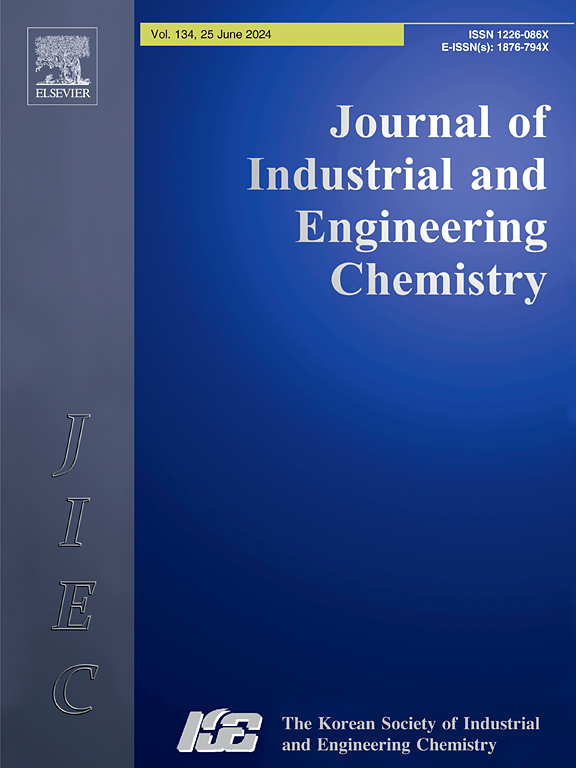A multi-approach study on CO2 absorption in packed beds: Theoretical, experimental, and CFD perspectives on gas phase pulsation
IF 5.9
3区 工程技术
Q1 CHEMISTRY, MULTIDISCIPLINARY
Journal of Industrial and Engineering Chemistry
Pub Date : 2024-11-27
DOI:10.1016/j.jiec.2024.11.046
引用次数: 0
Abstract
This work seeks to improve CO2 absorption efficiency in packed bed columns by substituting amine-based solvents with sodium hydroxide and implementing gas phase pulsation to enhance mass transfer coefficients. Experimental analysis and computational fluid dynamics modeling were employed to investigate the impact of pulsation on absorption efficiency under various conditions. Essential parameters comprised superficial liquid velocity (1.2–4.6 cm/s), pulsation frequency (0–10 Hz), amplitude (0–20 mm), and NaOH concentration (0.25 N to 2 N), while maintaining a constant superficial gas velocity of 120 cm/s and a solute gas concentration of 13 %. Three packing materials—glass spheres, ceramic Raschig rings, and ceramic Pall rings—were evaluated. The results demonstrated that ceramic Pall rings exhibited the greatest efficiency. Pulsation, namely at 9.06 Hz and 20 mm amplitude, enhanced the volumetric mass transfer coefficient by as much as 4.53 times for Pall rings. Increased column diameters (from 7.00 cm to 11.5 cm) enhanced performance. The findings show advancement of more efficient CO2 absorption (by switching from chemical absorption using amine based solvents to classical chemical absorption using aqueous NaOH solution) for industrial applications, aiding climate change mitigation initiatives.

求助全文
约1分钟内获得全文
求助全文
来源期刊
CiteScore
10.40
自引率
6.60%
发文量
639
审稿时长
29 days
期刊介绍:
Journal of Industrial and Engineering Chemistry is published monthly in English by the Korean Society of Industrial and Engineering Chemistry. JIEC brings together multidisciplinary interests in one journal and is to disseminate information on all aspects of research and development in industrial and engineering chemistry. Contributions in the form of research articles, short communications, notes and reviews are considered for publication. The editors welcome original contributions that have not been and are not to be published elsewhere. Instruction to authors and a manuscript submissions form are printed at the end of each issue. Bulk reprints of individual articles can be ordered. This publication is partially supported by Korea Research Foundation and the Korean Federation of Science and Technology Societies.

 求助内容:
求助内容: 应助结果提醒方式:
应助结果提醒方式:


